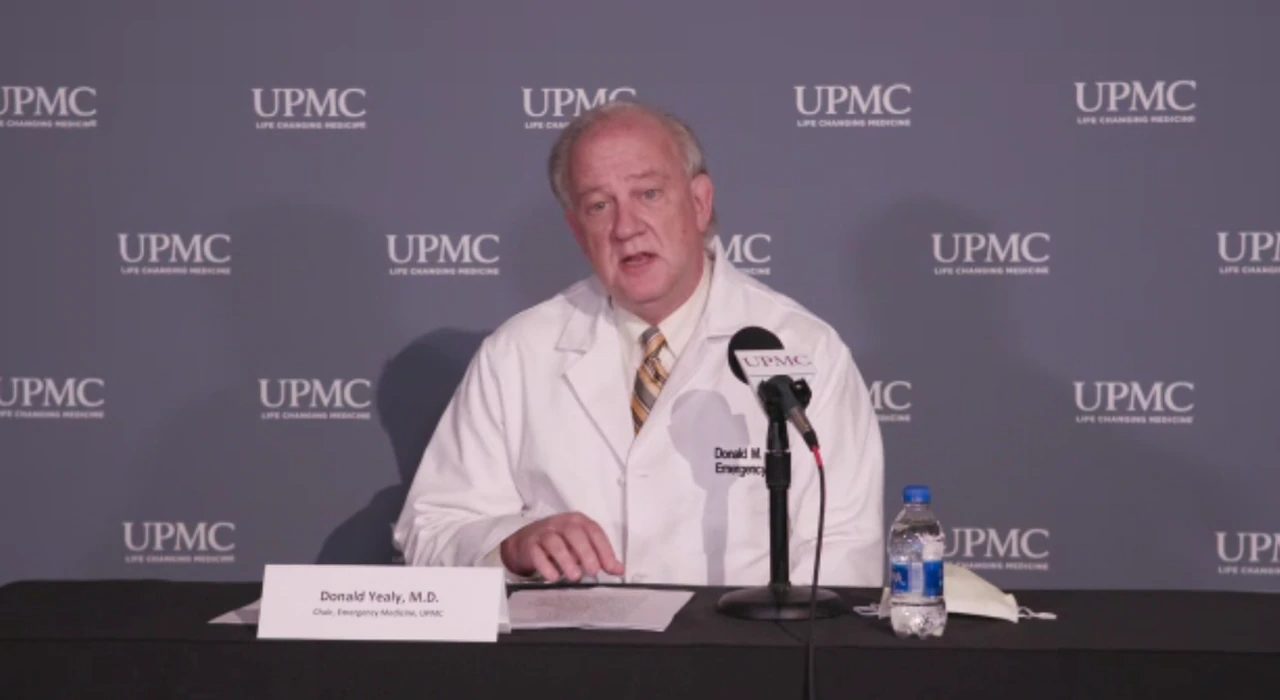
Dr. Donald Yealy based it partly on studies of levels of coronavirus antibodies detected in people in New York and California, and partly on COVID-19 deaths in the Pittsburgh region. The studies found that 5-20% of people had been exposed to the coronavirus, with many noticing only mild illness or none at all, he said.
"We've learned that way more people, far, far more people have actually been exposed to the infection without any knowledge of it. That makes the overall death rate much lower," said Yealy, who is UPMC's chair of emergency medicine. "Many people just didn't feel sick at all and recovered without difficulty."
Yealy went on to offer a hypothetical scenario of 3% of Allegheny County residents being exposed — a conservative number compared to the findings of the New York and California studies.
That would mean about 36,000 people in Allegheny have been exposed to the coronavirus. With 94 COVID-19 deaths in the county as of Thursday, it would mean 0.25 percent of people exposed to the coronavirus had died, he said.
"There is a big difference between 0.25% mortality and 7%," Yealy said.
Yealy said about 1,300 people in Allegheny have tested positive for COVID-19. That would mean, in his hypothetical scenario, another 34,700 had been exposed but had no symptoms. He noted the latter group may also have antibodies to protect them from future infection, although he pointed out it's still unknown how much protection people get from previous exposure to the new coronavirus.
Yealy further said the majority of the deaths among UPMC patients involved people over 80, with many being nursing home residents.
Comment: Most of whom would likely have died from any additional complications, whether that be a fall or a mild infection.
Yealy has been one of the main public voices of UPMC during the coronavirus pandemic. He spoke Thursday during a 40-minute online discussion with reporters.
Another speaker, Dr. Rachel Sackrowitz, the chief medical officer for UPMC's intensive care units, said 234 COVID-19 patients have recovered and been discharged from UPMC hospitals. "This is very good news. It means people are getting better and we're all on the right track together."
Yealy said only 2% percent of the UPMC system's 5,500 beds are occupied by COVID-19 patients and the number of new COVID-19 patients is declining.
He cited that figure in explaining UPMC's plans to quickly increase its volume of the non-emergency surgeries that were largely banned to conserve beds and supplies for COVID-19 patients. The ban is now being eased as the volume of COVID-19 patients falls short of worst-case predictions.
The officials said UPMC remains ready to deal with any upturn in COVID-19 cases.
Yealy said he can't predict if there will be a second wave, but said "What I suspect is COVID-19 will be a part of our experience treating patients for an extended [period of] months to maybe years."
Yealy was asked whether people should worry about COVID-19 more than the regular flu. He said people should be "worried differently," pointing out that both take their heaviest toll on the elderly, especially nursing home residents, and people weakened by other medical conditions.
Yealy said he "would not think of it as more or less, just two different illnesses that share some features, but have some distinct differences."
Sackrowitz said she expects COVID-19 will be part of the ongoing "disease burden" affecting Americans and, as with the flu, doctors will find treatments.



Now that the facts and science are UNDENIABLE even the good guys gotta say "We must EASE into it." (An example of subconscious virtue signalling/appeasement to the lockers!